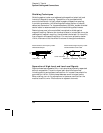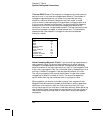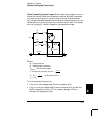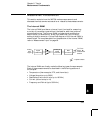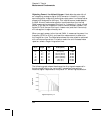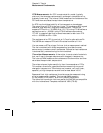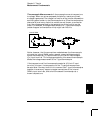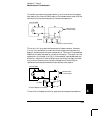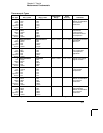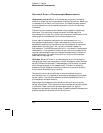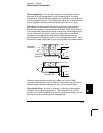
RTD Measurements An RTD is constructed of a metal (typically
platinum) that changes resistance with a change in temperature in a
precisely known way. The internal
DMM measures the resistance of the
RTD and then calculates the equivalent temperature.
An
RTD has the highest stability of the temperature transducers.
The output from an
RTD is also very linear. This makes an RTD a good
choice for high-accuracy, long-term measurements. The 34970A
supports RTDs with
α = 0.00385 (DIN / IEC 751) using ITS-90 software
conversions and
α = 0.00391 using IPTS-68 software conversions.
“PT100” is a special label that is sometimes used to refer to an
RTD
with α = 0.00385 and R
0
= 100Ω.
The resistance of an
RTD is nominal at 0 °C and is referred to as R
0
.
The 34970A can measure
RTDs with R
0
values from 49Ω to 2.1 kΩ.
You can measure
RTDs using a 2-wire or 4-wire measurement method.
The 4-wire method (with offset compensation) provides the most
accurate way to measure small resistances. Connection lead resistance
is automatically removed using the 4-wire method.
Thermistor Measurements A thermistor is constructed of materials
that non-linearly changes resistance with changes in temperature.
The internal
DMM measures the resistance of the thermistor and then
calculates the equivalent temperature.
Thermistors have a higher sensitivity than thermocouples or
RTDs.
This makes a thermistor a good choice when measuring very small
changes in temperature. Thermistors are, however, very non-linear,
especially at high temperatures and function best below 100
°C.
Because of their high resistance, thermistors can be measured using
a 2-wire measurement method. The internal
DMM supports
2.2 k
Ω (44004), 5 kΩ (44007), and 10 kΩ (44006) thermistors.
The thermistor conversion routines used by the 34970A are compatible
with the International Temperature Scale of 1990 (ITS-90).
Chapter 8 Tutorial
Measurement Fundamentals
346



